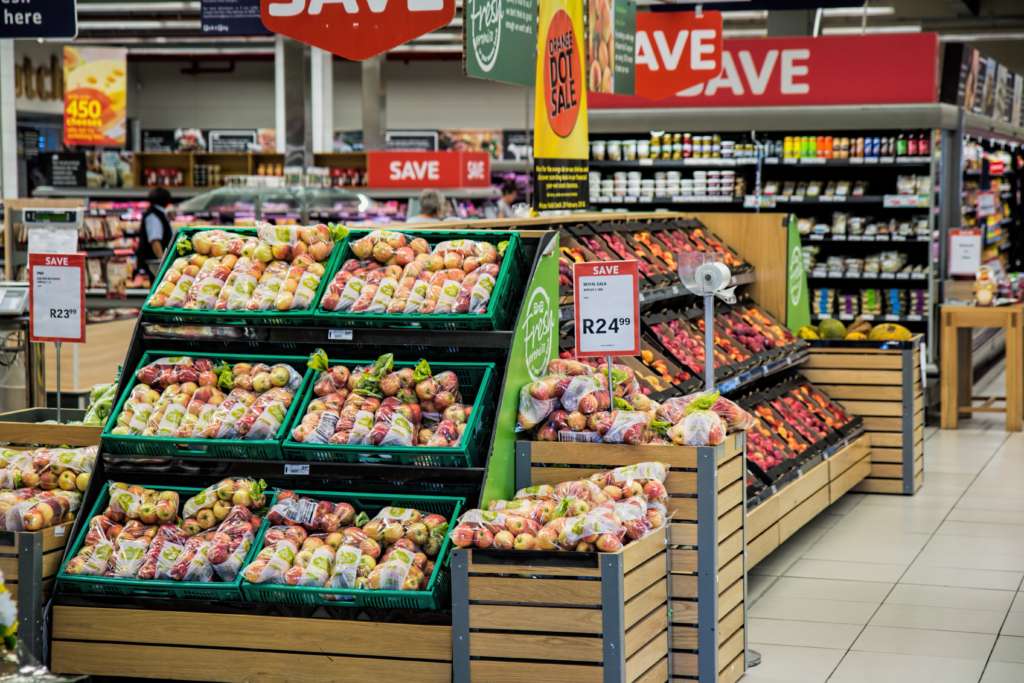We are all guilty of it, stopping by the grocery store to pick up a few things and then leaving with a whole bunch more than you planned. Have no fear, I have developed some strategies to help keep your grocery shopping trips focused and healthy without any distractions of the “bad stuff”. The main key to grocery shopping I will share right now, DO NOT go when you are hungry! This is when you are more likely to either go for all the free samples (extra calories that aren’t needed) and fill up your cart with anything and everything you see.
Don’t Worry I Got You!
Below are 3 helpful steps to help navigate your way through the grocery store in order to support your healthy lifestyle and avoid diet sabotage. Take note of the main points in this article before you make your next trip to the grocery store and of course and I hope this helps you better navigate while grocery shopping with less temptation.

STEP 1: THE GROCERY SHOPPING LIST
Before heading to the grocery store prepare a detailed weekly shopping list. I recommend sitting down on a Sunday to plan out your main meals for the week, from there you can create a shopping list of all the ingredients/items you will need to make your healthy meals. Having a list will help you stay focused in the grocery store and avoid picking up “temptation items” that could be detrimental to your diet if kept in the cupboards at home. Lastly, remember to stick to the main rule: IF IT’S NOT ON THE LIST KEEP IT OUT OF THE CART! Yes, even if it’s on sale, even if it smells good, even if there was a sample lady there sucking you into buying it, and especially if it’s something high in sugar you think you might reach for when feeling “snacky” instead of healthier options (the ones on the list!).
STEP 2: MAP YOUR ROUTE THROUGH THE GROCERY STORE
For the majority of your food items you will only need to stick to the perimeter of the grocery store, as this is where the fruits, veggies, meats, dairy, and whole grains are located. Occasionally trips into the “temptation pit” (yup, I called it that …lol) can be made to pick up specific food items like flax seeds, whole oats, healthy oils, nut butters, whole grains, or bulk foods; however be sure to have your game face on and avoid any impulse purchases.
Grocery stores are often designed so that you walk straight into the produce/bakery section, which is a great place to start your grocery shopping trip. The more foods you can fill up your cart with that are in their natural state (not in a box, not processed, no added ingredients etc.) the better. Fruit, vegetables, and lean meat should fill up about 75% of your cart, then as you continue on your journey around the outside of the store you can continue to add your other items from the list. Just take a look next time you are at the grocery store and you will realize exactly what I mean when I tell you that the outskirts of the grocery store is where it’s at to avoid temptation.
STEP 3: READ LABELS BEFORE YOU BUY
Lately I have seen many people reading nutrition labels in the grocery store and not going to lie, it makes me smile! Lol… Yes, I am the weirdo that get’s excited when I see other people taking an interest in what they are putting in their bodies. Why? Because it’s amazing what you will learn and notice when you start reading nutrition labels. There are so many sneaky ingredients (especially sugar) that you would never expect, have you ever read the nutrition label on the bread you buy?
Reading food labels can be very confusing and most people don’t really know what to look for, here are a few main priorities:
Avoid foods with:
- Trans fats
- High sugar content per serving (more than 10g)
- Long ingredient lists with lots of artificial ingredients and added chemicals
- Healthy products with unhealthy additional sugars such as sucrose, glucose, sugar, maltodextrin, corn syrup etc.
- High sodium content
Don’t believe everything you read because occasionally food labels make claims to trick you into thinking they are the healthy choice when they truly aren’t. Watch out for claims like: “no added sugar”, “contains real fruit”, “natural”, “fat-free”, “low carb”, “high-protein”. I am not saying all labels with these types of phrases are lying, but just be aware and investigate these claims by checking nutrition labels and ingredient lists. Think of it this way, if a food needs to make claims on the label that it is healthy then most likely it is not actually good for you. Some lower quality high-processed foods make these claims in order to deceive people into buying it; however, this can be avoided by being a smart shopper!
“Think of it this way, if a food needs to make claims on the label that it is healthy then most likely it is not actually good for you.”
Email me for more information about how to make each trip to the grocery store a success.
Follow me on Instagram @MIchelleRootsFit for more daily nutrition and fitness tips!
Leave a reply